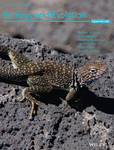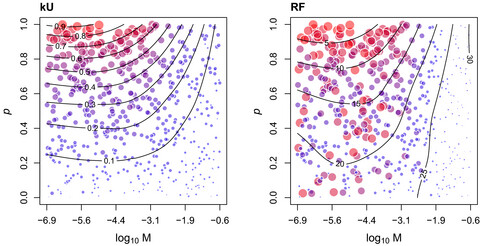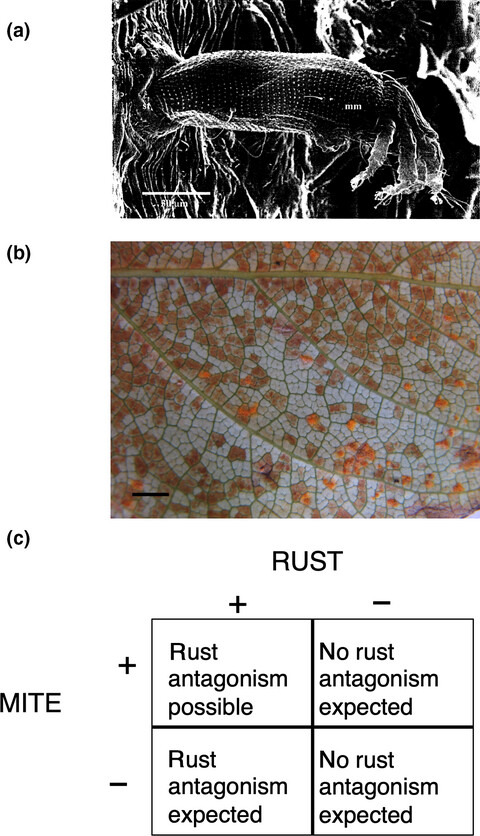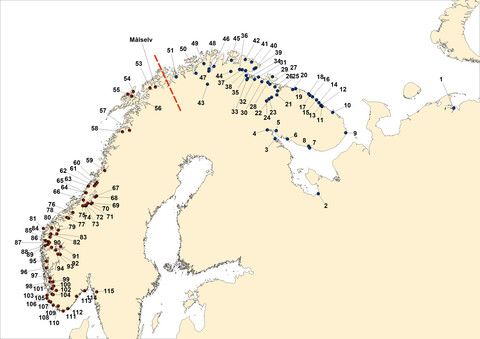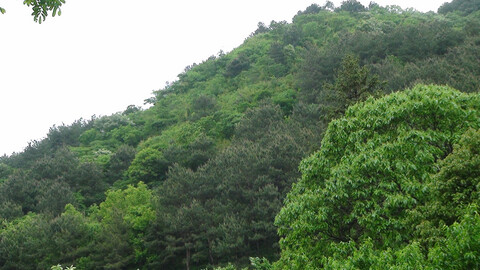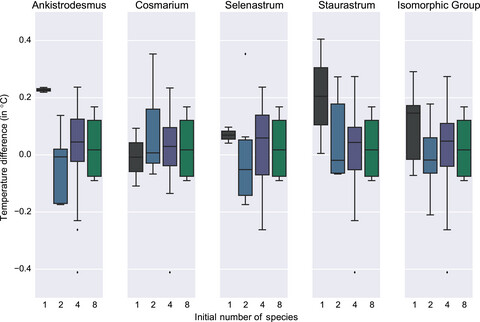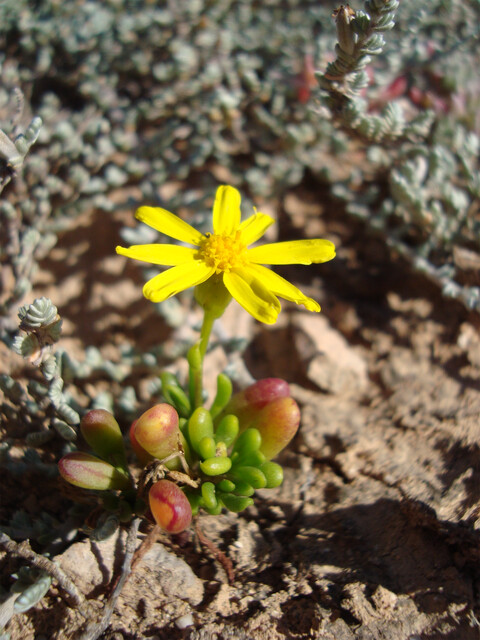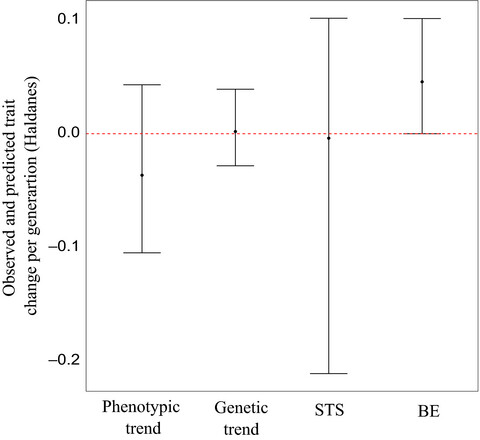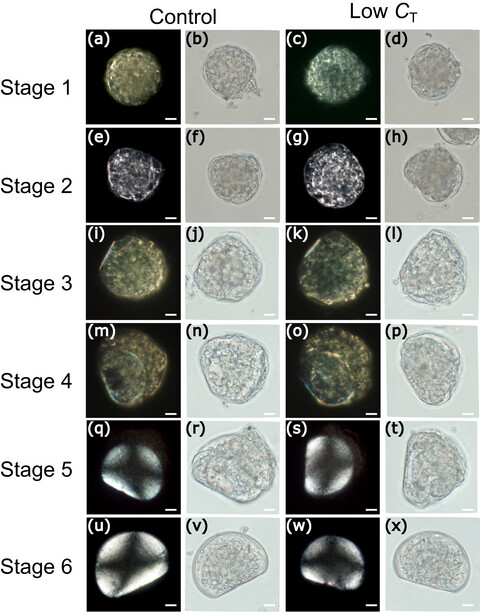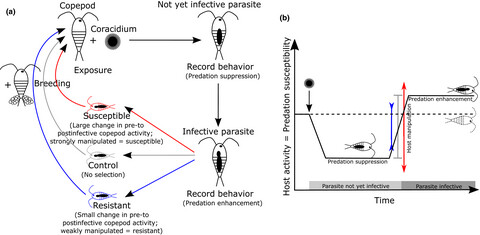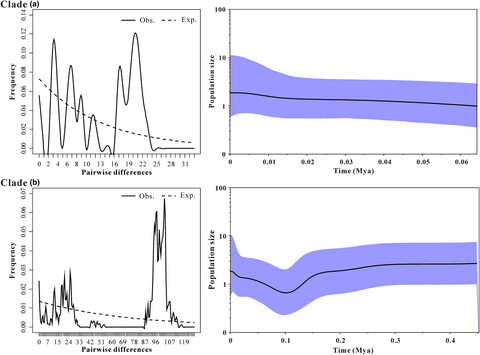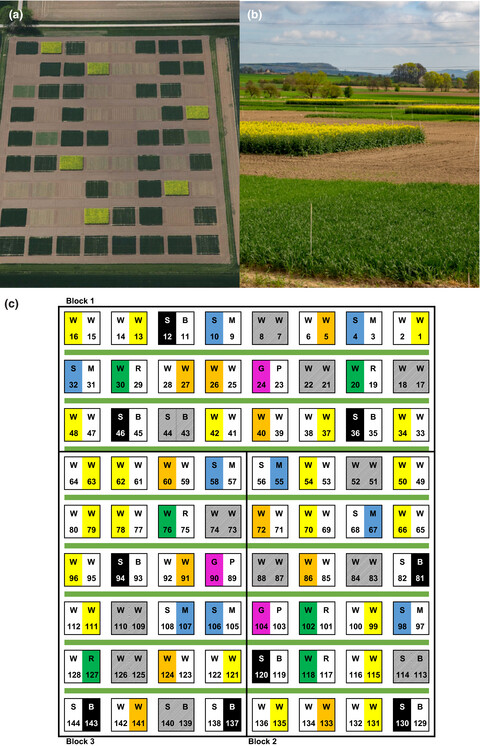Journal list menu
Export Citations
Download PDFs
ISSUE INFORMATION
ACADEMIC PRACTICE IN ECOLOGY AND EVOLUTION
Evolution of interdisciplinarity in biodiversity science
- Pages: 6744-6755
- First Published: 10 June 2019

Biodiversity science is a growing field that faces an array of complex problems currently affecting human well-being globally, which may benefit from greater interdisciplinarity. However, there is not yet compelling evidence showing whether biodiversity science has become more interdisciplinary. Using a large database of published literature, we show that literature within biodiversity science has become more conceptually homogeneous over the last two decades by drawing upon increasingly similar scientific ideas and concepts. Surprisingly, we find that, on average, interdisciplinarity in biodiversity science is stable or declining over time, in contrast to more well-established disciplines such as physics, mathematics, or medicine.
ORIGINAL RESEARCH
Tree shape-based approaches for the comparative study of cophylogeny
- Pages: 6756-6771
- First Published: 29 May 2019
Dissolved iron elution from mangrove ecosystem associated with polyphenols and a herbivorous snail
- Pages: 6772-6784
- First Published: 29 May 2019
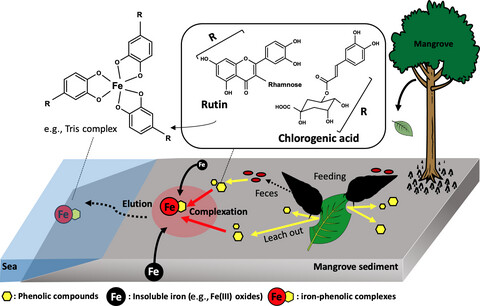
The iron-supply function of mangrove ecosystems to coastal sea: This paper indicated that iron solubilization in mangrove sediments will be promoted by interaction among (a) iron in the sediment, (b) phenolic compounds derived from mangroves, and (c) the consumption of leaves and deposition of feces by snails.
Feedback of coastal marshes to climate change: Long-term phenological shifts
- Pages: 6785-6797
- First Published: 13 June 2019
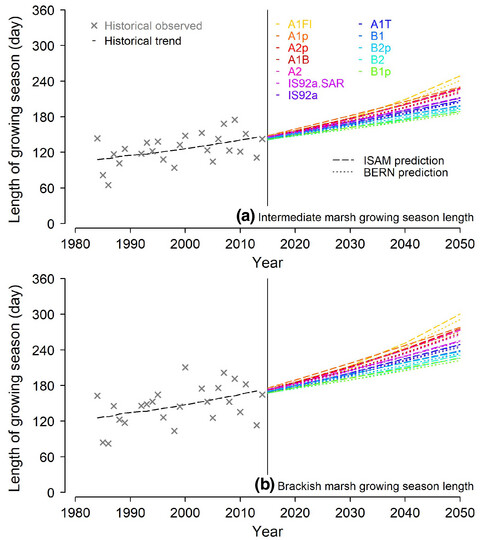
This study documents the multi-decadal changes in the phenology and the area of the extensive coastal marshes in Louisiana, USA, a representative of coastal ecosystems around the world that currently experiencing sea-level rise, temperature warming, and atmospheric CO2 increase. We find that the length of the growing seasons of the intermediate and brackish marshes increased concomitantly with the atmospheric CO2 concentration over the last 30 years and predict that such changes will continue and accelerate in the future. The phenological changes of the marshes suggest a potential increase in CO2 uptake and thus a negative feedback mechanism to climate change, but the area decrease suggests ecosystem instability and carbon storage loss under the anticipated sea-level rise. The marshes' phenological shifts portend their potentially critical role in climate mitigation, and the different responses among systems shed light on the underlying mechanisms of such changes.
Detecting the genetic basis of local adaptation in loblolly pine (Pinus taeda L.) using whole exome-wide genotyping and an integrative landscape genomics analysis approach
- Pages: 6798-6809
- First Published: 29 May 2019
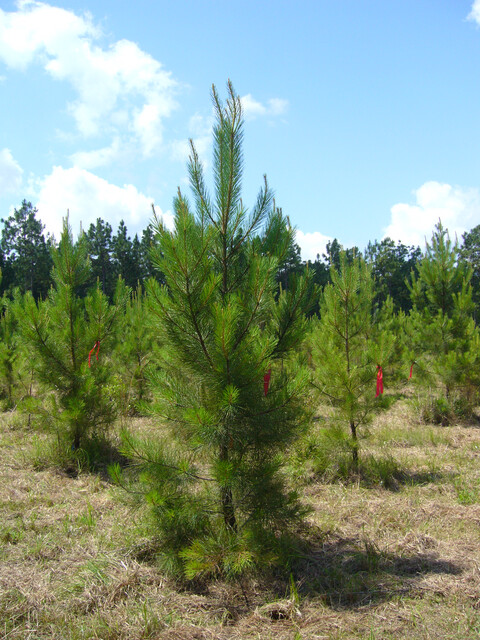
We tested the association of 2.8 million whole exome-based single nucleotide polymorphisms (SNPs) with climate and geographic variables, including temperature, precipitation, latitude, longitude, and elevation data. Using an integrative landscape genomics approach by combining multiple environmental association and outlier detection analyses, we identified 611 SNPs associated with 56 climate and geographic variables. Our study promotes understanding of the genetic basis of local adaptation in loblolly pine and provides promising tools for selecting genotypes adapted to local environments in a changing climate.
Local adaptation does not lead to genome-wide differentiation in lava flow lizards
- Pages: 6810-6820
- First Published: 29 May 2019
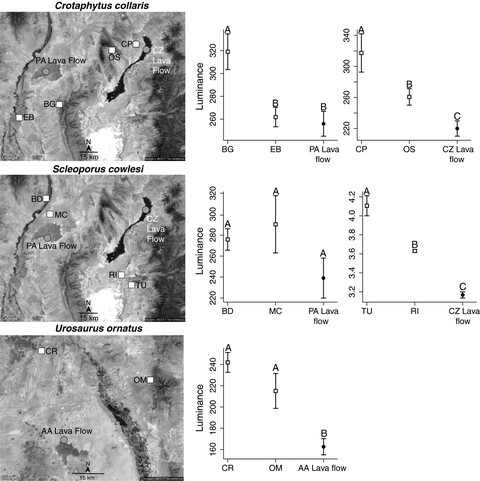
Multiple species of lizards on lava flows in the southwestern United States display local adaptation for crypsis on the black basalt lava rocks. Using replicated species and populations, we investigated whether lava flow lizards were significantly darker than surrounded populations and whether the phenotypic differentiation was accompanied by genome-wide differentiation. Despite literature claiming that genome-wide differentiation should be common with local adaptation to environmental differences, we found no evidence for genome-wide differentiation regardless of levels of phenotypic differentiation and find evidence for ongoing migration between lava flow and nonlava flow populations.
Signals of positive selection in mitochondrial protein-coding genes of woolly mammoth: Adaptation to extreme environments?
- Pages: 6821-6832
- First Published: 09 May 2019
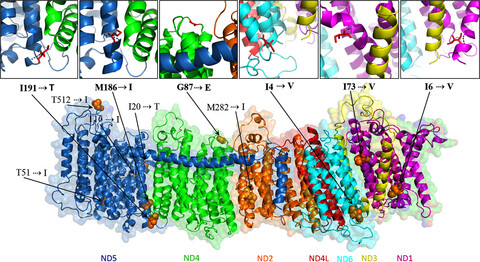
We detected 11 amino acid sites that are under positive selection in the mitogenome of the woolly mammoth, where amino acid substitutions may influence the performance of protein–protein binding and regulation of cellular energy metabolism. These findings imply adaptive evolution of woolly mammoths' mitogenome to cope with extreme environments.
Current and future potential distributions of three Dracaena Vand. ex L. species under two contrasting climate change scenarios in Africa
- Pages: 6833-6848
- First Published: 11 June 2019
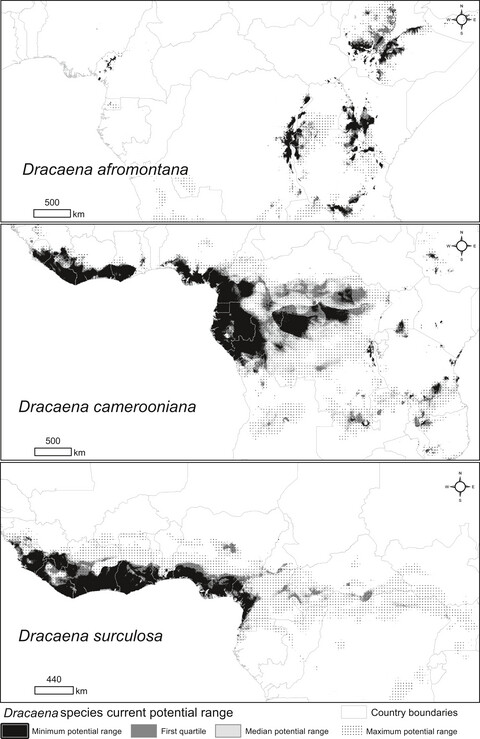
This is the first study that developed species distribution models and estimated current and future potential distributions of the forest undergrowth Dracaena species. D. afromontana, naturally associated with mountainous plant communities, turned out to be the most sensitive to predicted climate warming. Contrastingly, D. surculosa was predicted to extend its geographical range, regardless of the climate change scenario.
Cytogeography and chromosomal variation of the endemic East Asian herb Lycoris radiata
- Pages: 6849-6859
- First Published: 22 May 2019
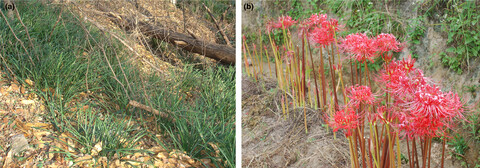
The spatial distribution of cytological races and intraspecific variation in the karyotype of Lycoris radiata, an endemic species to East Asia, is investigated. Of 114 populations studied, 52 (45.61%), 58 (50.88%), and 4 (3.51%) are diploid, triploid, and mixoploid populations, respectively, with 1224, 1195, and 1 individuals being diploid, triploid, and tetraploid, respectively. The triploid possesses a much wider distribution range than the diploid, with the former occupying almost the entire range of this complex species in East Asia and the latter distributing in the middle and east regions of China.
Contingency rules for pathogen competition and antagonism in a genetically based, plant defense hierarchy
- Pages: 6860-6868
- First Published: 23 May 2019
Microbial communities across a hillslope-riparian transect shaped by proximity to the stream, groundwater table, and weathered bedrock
- Pages: 6869-6900
- First Published: 13 June 2019
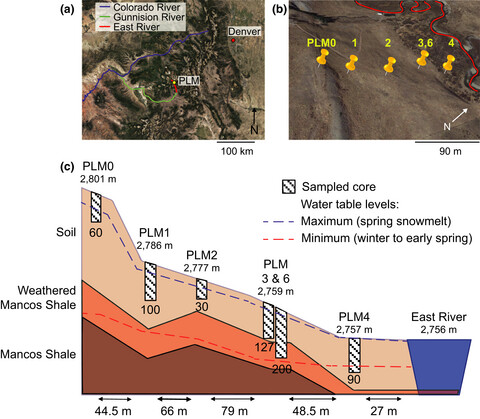
Metagenomic and geochemical analyses indicate that distance from the East River and proximity to groundwater and underlying weathered shale strongly impact microbial community structure and metabolic potential. Bacteria from phyla lacking isolated representatives consistently increase in abundance with increasing depth, but only in the riparian zone saturated sediments did we find Candidate Phyla Radiation bacteria. Riparian zone microbial communities are functionally differentiated from hillslope communities based on their capacities for carbon and nitrogen fixation and sulfate reduction. Selenium reduction is prominent at depth in weathered shale and saturated riparian zone sediments and could impact water quality.
Population genetic analysis reveals a geographically limited transition zone between two genetically distinct Atlantic salmon lineages in Norway
- Pages: 6901-6921
- First Published: 22 May 2019
Effects of forest types on leaf functional traits and their interrelationships of Pinus massoniana coniferous and broad-leaved mixed forests in the subtropical mountain, Southeastern China
- Pages: 6922-6932
- First Published: 22 May 2019
Ultraconserved element (UCE) probe set design: Base genome and initial design parameters critical for optimization
- Pages: 6933-6948
- First Published: 11 June 2019
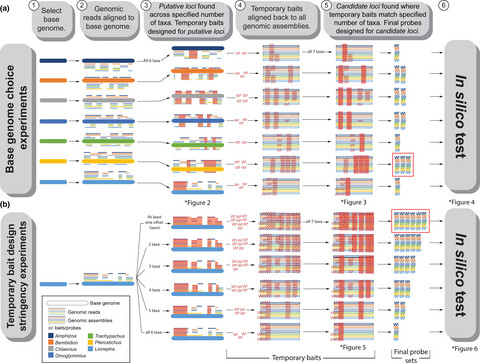
Base genome and initial design parameters are found to greatly affect UCE probe set design. In order to design an optimized probe set with the largest number of probes with the longest lengths, base genome experiments should be conducted or the taxon with the smallest average genetic distance from all other taxa of interest should be selected to serve as the base genome. Probe design should then proceed with less stringent initial design parameters, targeting loci share between the base genome and as few as one other taxon.
Biodiversity and thermal ecological function: The influence of freshwater algal diversity on local thermal environments
- Pages: 6949-6958
- First Published: 22 May 2019
Natural selection drives leaf divergence in experimental populations of Senecio lautus under natural conditions
- Pages: 6959-6967
- First Published: 11 June 2019
Genomewide identification and analysis of heat-shock proteins 70/110 to reveal their potential functions in Chinese soft-shelled turtle Pelodiscus sinensis
- Pages: 6968-6985
- First Published: 20 May 2019
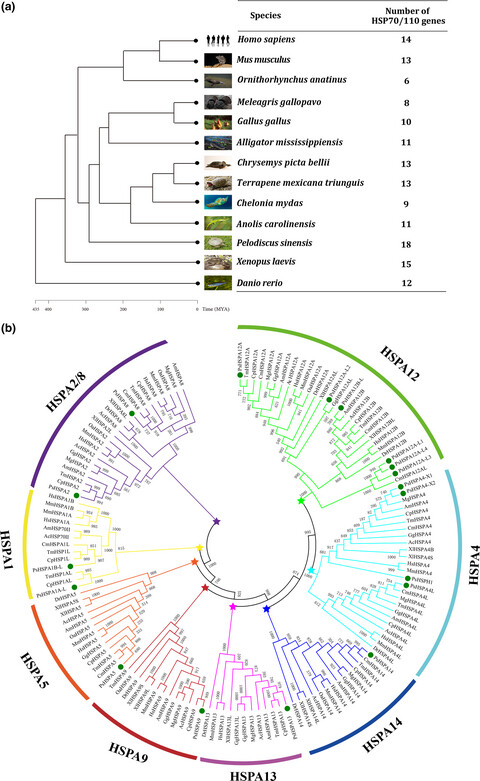
The candidate PsHSP70/110 family genes were identified and analyzed in Pelodiscus sinensis. PsHSPA1B-L, PsHSPA2, and PsHSPA8 were significantly upregulated in Pelodiscus sinensis testis along with seasonal spermatogenesis and germ cell apoptosis. PsHSPA1B-L, PsHSPA2, and PsHSPA8 play the potential roles in inhibiting apoptosis of germ cells in Pelodiscus sinensis.
Is MHC diversity a better marker for conservation than neutral genetic diversity? A case study of two contrasting dolphin populations
- Pages: 6986-6998
- First Published: 23 May 2019
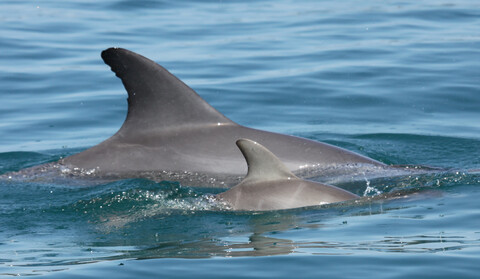
Genetic diversity is crucial for populations to adapt to changing environments and is thus an important indicator for conservation. Our study compares adaptive genetic diversity of the major histocompatibility complex (MHC) and neutral genetic diversity two contrasting bottlenose dolphin populations that greatly differ with respect to population viability. The results suggest that population viability is better reflected by MHC diversity than by neutral genetic diversity.
Invasive Galega officinalis (Goat's rue) plants in Canada form a symbiotic association with strains of Neorhizobium galegae sv. officinalis originating from the Old World
- Pages: 6999-7004
- First Published: 26 May 2019
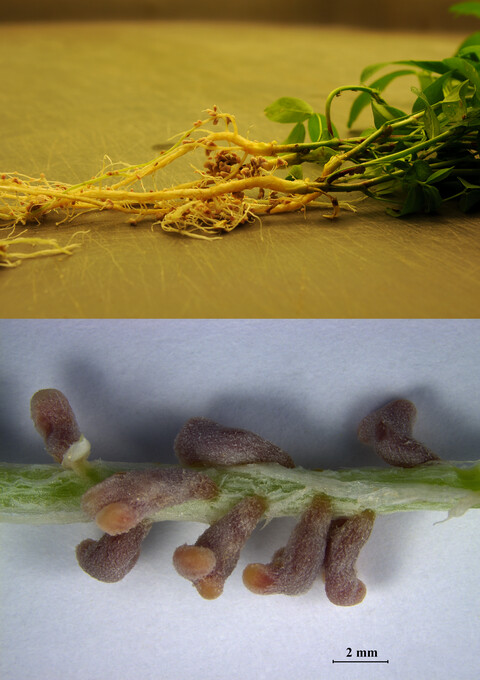
Sequence analysis of four housekeeping and two symbiosis genes showed that bacterial isolates from root-nodules of invasive Galega officinalis plants at five Canadian sites were identical to strains of Neorhizobium galegae sv. officinalis originating either from Europe or the Caucuses. Collectively our data support the hypothesis of anthropogenic co-introduction of G. officinalis and its specific bacterial symbiont into Canada from the Old World.
Macroevolution of arboreality in salamanders
- Pages: 7005-7016
- First Published: 26 May 2019
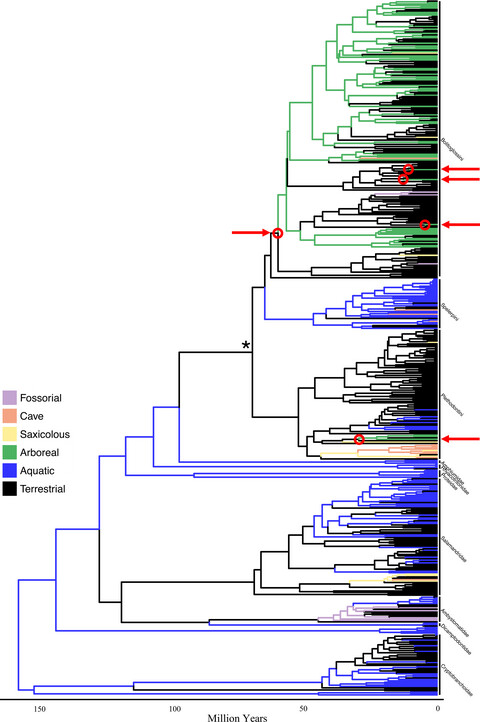
Arboreality is surprisingly common across the family of lungless salamanders, yet it remains unclear how arboreality has influenced the macroevolution of microhabitat use and morphology. We found several independent transitions to arboreality solely from terrestrial ancestors, nearly 60 reversions to terrestrial life from arboreality, decreased rate of morphological evolution, and evidence of convergence of general body proportions and foot shape across arboreal species.
From microsatellites to single nucleotide polymorphisms for the genetic monitoring of a critically endangered sturgeon
- Pages: 7017-7029
- First Published: 11 June 2019
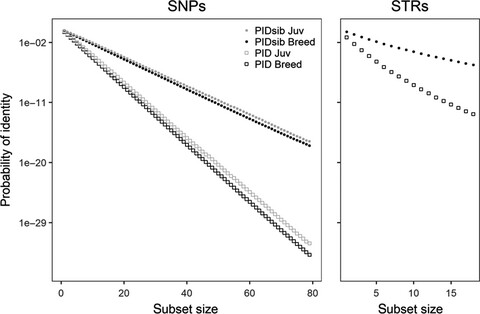
Many threatened species are managed under captive breeding programs that need precise genetic data, critical to guide breeding schemes and manage restocking efforts. In this study, we present a novel set of SNP markers for the critically endangered Acipenser sturio as well as a detailed comparison of the effectiveness of these SNPs with microsatellite markers in respect to parentage assignment, and for relatedness and inbreeding estimations. These last parameters are crucial to optimize conservation strategies, especially in such genetically depleted populations composed of highly related individuals.
Spatial differences in genetic diversity and northward migration suggest genetic erosion along the boreal caribou southern range limit and continued range retraction
- Pages: 7030-7046
- First Published: 26 May 2019
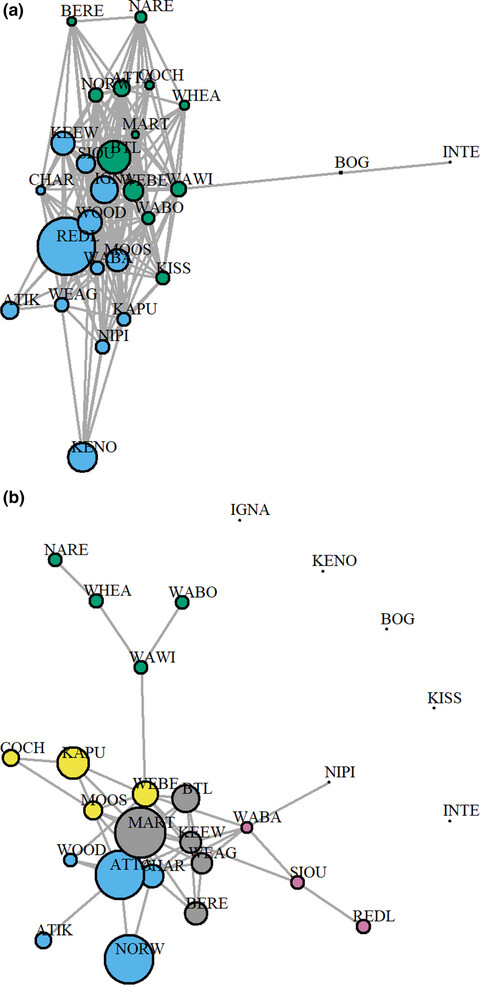
Fragmentation in species distribution is often associated with reduced population sizes and loss of genetic connectivity and diversity (i.e., genetic erosion) which may further diminish a species' ability to respond to changing environmental conditions and lead to local population extinctions. We studied threatened boreal caribou (Rangifer tarandus caribou) populations to assess changes in genetic diversity and connectivity in areas presenting different levels of anthropogenic activities. Our results point to significant genetic erosion along the southern limit of the contiguous distribution of the species in central Canada suggesting ongoing range retraction.
Drought-response strategies of savanna herbivores
- Pages: 7047-7056
- First Published: 22 May 2019
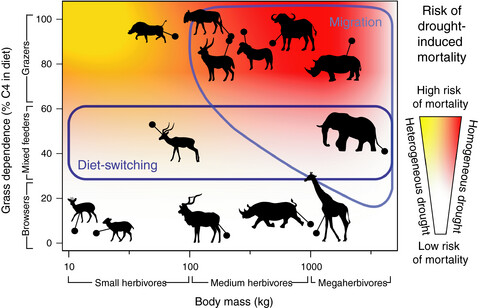
Droughts are becoming increasingly frequent and severe with climate change. However, evaluating how animals respond to drought is experimentally impossible, such that observational studies are key to understanding animal drought responses. Here, we present a rare opportunistic study of savanna herbivore responses to severe drought, with manifold implications for their conservation.
Comparative transcriptomics reveals the selection patterns of domesticated ramie
- Pages: 7057-7068
- First Published: 22 May 2019
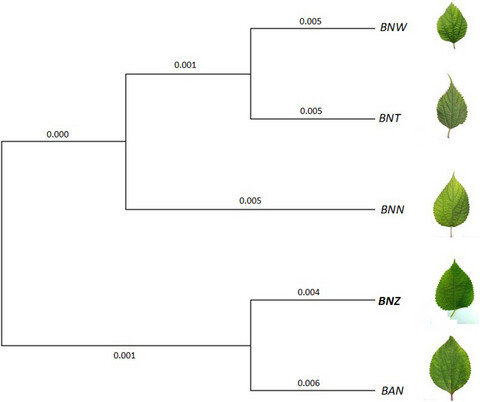
We investigate the selective pattern and genetic relationships among a cultivated variety of ramie (BNZ: B. nivea, ZZ1) and four wild species, BNT (B. nivea var. tenacissima), BNN (B. nivea var. nipononivea), BNW (B. nivea var. nivea), and BAN (B. nivea var. viridula), in the section Tilocnide. The phylogenetic tree showed that the cultivar BNZ clusters with BAN in one group, BNW is closely related to BNT, and BNN forms a separate group. Comparative transcriptomics indicates that domestication has resulted in the up-regulation of many genes involved in the abiotic and biotic stress responses, fiber yield, and plant growth of ramie.
Senescence and costs of reproduction in the life history of a small precocial species
- Pages: 7069-7079
- First Published: 29 May 2019
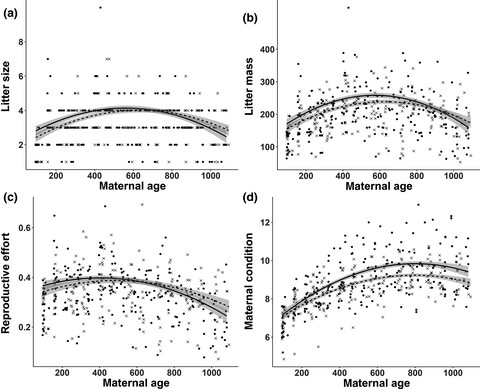
A major assumption of life-history theory is that reproduction should lead to mortality and/or fertility costs. We manipulated reproductive effort experimentally in the precocial cavy (Cavia aperea). Our results show small costs of reproduction despite high RE and indicate clear senescence effects. Under ad libitum conditions expression of reproductive costs appear to depend largely on internal regulation of allocation decisions.
Divergent selection along elevational gradients promotes genetic and phenotypic disparities among small mammal populations
- Pages: 7080-7095
- First Published: 28 May 2019
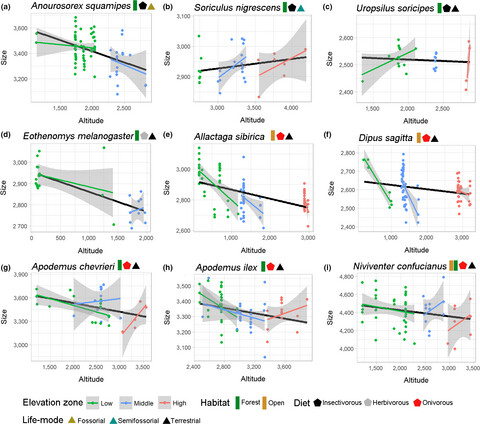
This is the first broad comparative study of phenotypic variation in small mammals along elevational gradients, integrating a large array of ecological predictors and disentangling population genetic driver processes. Our findings highlight the strong and multifaceted effects of heterogeneous steep habitats and divergent selective forces in small mammal populations, shaping both the phenotype and genotype of phylogenetically and ecologically distinct species.
Evolutionary stasis of a heritable morphological trait in a wild fish population despite apparent directional selection
- Pages: 7096-7111
- First Published: 11 June 2019
Combined effects of elevated CO2 concentration and Wolbachia on Hylyphantes graminicola (Araneae: Linyphiidae)
- Pages: 7112-7121
- First Published: 29 May 2019
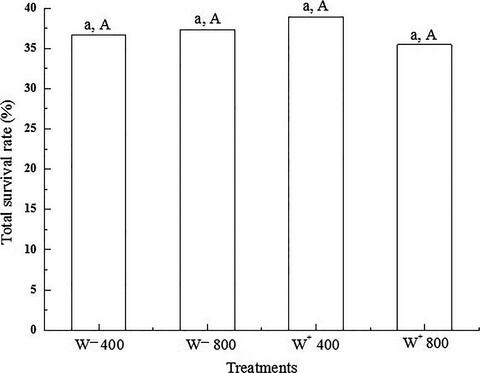
According to CO2 concentration (ambient, 400 ppm and high, 800 ppm) and Wolbachia status (Wolbachia-infected, W+ and Wolbachia-uninfected, W−), we divided Hylyphantes graminicola into four treatments: W− 400, W− 800, W+ 400, and W+ 800. The total survival rate, developmental duration, carapace width and length, body weight, sex ratio, net reproductive rate, nutrition content, and enzyme activity in H. graminicola were examined.
Seeking shelter from the storm: Conservation and management of imperiled species in a changing climate
- Pages: 7122-7133
- First Published: 30 May 2019
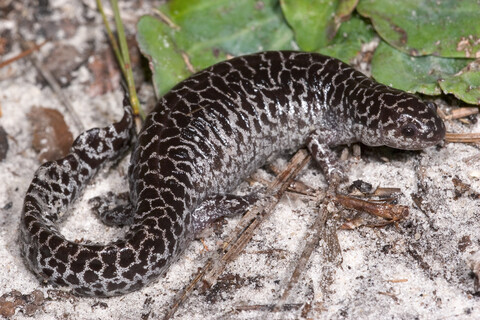
We report observations of short-term impacts of Hurricane Michael, which impacted the Gulf Coast of the southeastern USA in October 2018. Storm surge from the hurricane inundated wetlands used for breeding by the federally threatened frosted flatwoods salamander and, although live adults were found after the storm, the long-term demographic consequences of this event are not known. The vulnerability of this imperiled species at the impacted site provides a basis for prioritizing the development of climate adaptation strategies that address the threat of hurricanes to imperiled species.
How a measure of tree structural complexity relates to architectural benefit-to-cost ratio, light availability, and growth of trees
- Pages: 7134-7142
- First Published: 26 May 2019
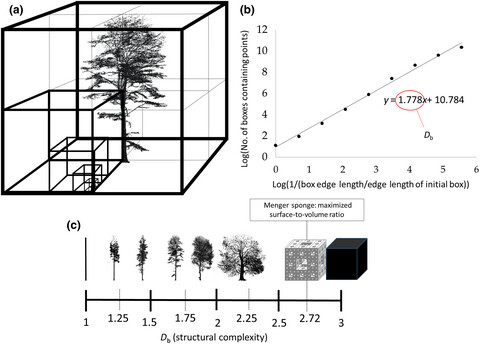
-
We detected a clear relationship between the structural complexity of trees and the benefit-to-cost ratio for three temperate forest tree species. We could also show that the structural complexity is positively related to the growth performance of several tropical tree species. Finally, we observed a negative relationship between the strength of competition enforced on red oak trees and their structural complexity. We therefore argue that structural complexity, here measured using Db, is a meaningful and integrative measure that describes the structural complexity of the aboveground compartments of a plant.
Effects of landscape complexity and stand factors on arthropod communities in poplar forests
- Pages: 7143-7156
- First Published: 11 June 2019
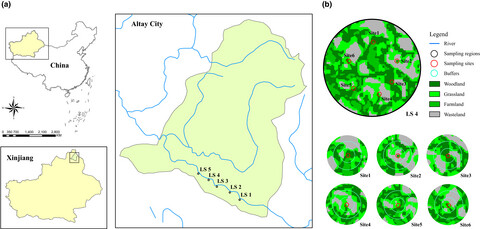
We examined the combined effects of landscape complexity and stand factors on poplar arthropod communities. We found that the proportion of nonhost plants and habitat diversity negatively influence poplar defoliators at the scale of 200 m, but they have no effects on predators. In contrast, the abundance and diversity of predators increase with increasing landscape connectivity of forest landscapes at the scale of 300 m, but defoliators have no significant response to it. Additionally, defoliators are positively correlated with the average height of herbaceous plants and size of host trees, but most predators were solely explained by the distance from sampling site to the nearest village.
Expression of calcification-related ion transporters during blue mussel larval development
- Pages: 7157-7172
- First Published: 29 May 2019
Avian fitness consequences match habitat selection at the nest-site and landscape scale in agriculturally fragmented landscapes
- Pages: 7173-7183
- First Published: 11 June 2019
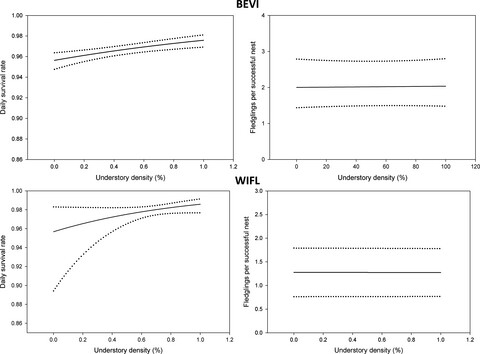
We studied fitness consequences of multiscale habitat selection by two avian species in agriculturally fragmented landscapes to test habitat selection theory which states that animals should be able to choose the best habitat when presented with habitats of heterogeneous quality. Generally, we found selection matched fitness consequences at finer scales for both species and one species at the landscape scale.
Disturbance history mediates climate change effects on subtropical forest biomass and dynamics
- Pages: 7184-7199
- First Published: 27 May 2019
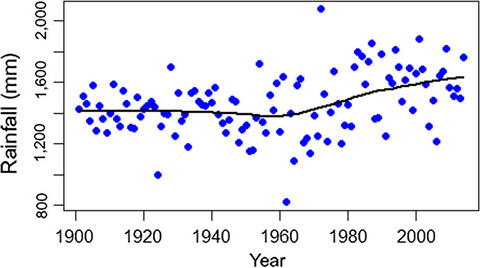
We investigated the 9-year change observed in a mixed conifer-hardwood Atlantic forest mosaic that included both mature and selectively logged forest patches in subtropical South America. Floristic composition differed between logging history categories, but did not change throughout the 9 studied years. Forest dynamics responded to local climate change differently depending on logging history.
Mismatches between breeding phenology and resource abundance of resident alpine ptarmigan negatively affect chick survival
- Pages: 7200-7212
- First Published: 26 May 2019
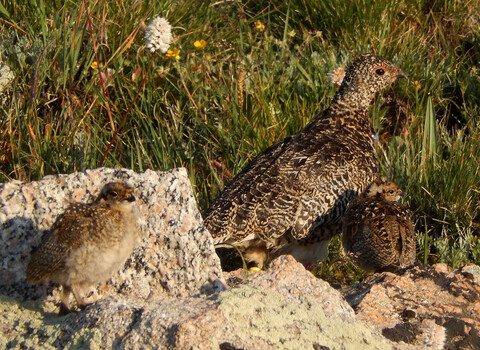
Female ptarmigan studied in Colorado's alpine raised fewer chicks to fledgling age when they hatched at sub-optimal times relative to the availability of seasonal foods, providing evidence that alpine ptarmigan populations may be susceptible to phenological mismatch. These findings have important implications for avian species occurring in highly seasonal environments given that their growing seasons are short and allow limited opportunities for multiple breeding attempts.
Ecological effects of fear: How spatiotemporal heterogeneity in predation risk influences mule deer access to forage in a sky-island system
- Pages: 7213-7226
- First Published: 02 June 2019
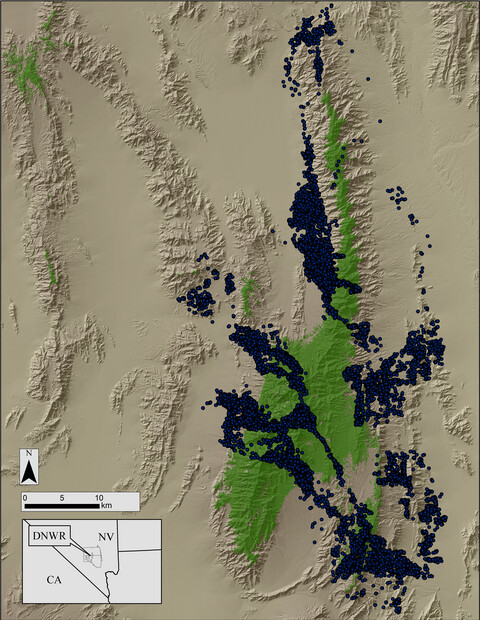
Sky-island populations, rarely studied, provide the opportunity to determine how mule deer respond to greening foliage along steep elevation and vegetation gradients when trapped with their predators and seasonally limited by aridity. We use novel methodology to ascertain these responses. Our findings indicate that fear of predation restricts access to the forage resources found in sky islands.
Seasonal variations in food resource partitioning among four sympatric gudgeon species in the upper Yangtze River
- Pages: 7227-7236
- First Published: 28 May 2019
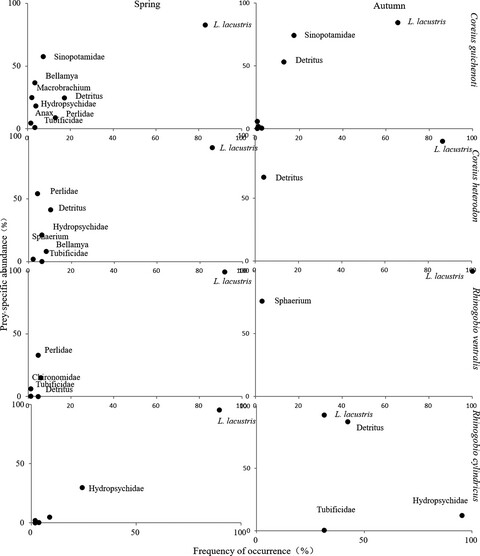
This study aims to examine the seasonal variations in food resource partitioning among four gudgeon species sympatric in the upper Yangtze River. High degrees of diet overlap among the examined species were observed due to their common utilization on the same food resources, especially in spring. However, changes in feeding strategies were observed in autumn.
Behavior out of control: Experimental evolution of resistance to host manipulation
- Pages: 7237-7245
- First Published: 02 June 2019
Coast to coast: High genomic connectivity in North American scoters
- Pages: 7246-7261
- First Published: 03 June 2019

Scoters are migratory species that nest in remote regions of the Arctic, experienced population declines, have unknown levels of dispersal, and are game species. Although scoter populations appear to be panmictic, a small percentage (<4%) of ddRAD loci had elevated divergence which may be useful to in linking areas throughout the annual cycle.
Phylogeography of Pulsatilla cernua (Ranunculaceae), a grassland species, in Japan
- Pages: 7262-7272
- First Published: 13 June 2019
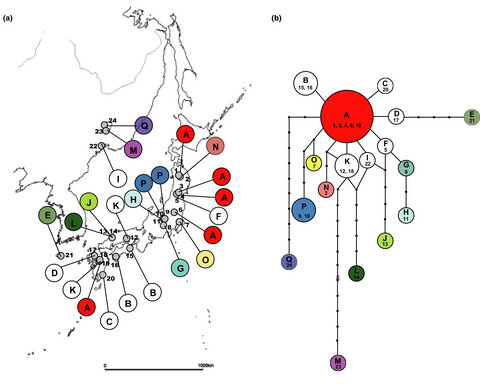
This study investigated the genetic diversity and structure among populations of P. cernua, one of the continental-grassland relicts, by analyzing microsatellites of nuclear DNA and chloroplast DNA. The microsatellite and cpDNA haplotype analyses indicate that the present fragmentation of P. cernua in Japan may reflect a rapid, recent reduction from a previously large, continuous distribution.
Escalating human–wildlife conflict in the Wolong Nature Reserve, China: A dynamic and paradoxical process
- Pages: 7273-7283
- First Published: 04 June 2019
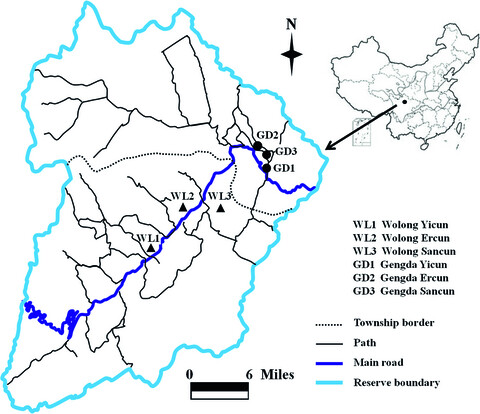
Human–wildlife conflict (HWC) in the Wolong Nature Reserve in China has increased rapidly in recent years due to effective biodiversity conservation and ecological restoration policies. Local natural resource managers and national-level policies have focused on endangered wildlife and the damage these species incur, but have ignored the sizable increases in common wildlife and the subsequent effects on the local community. Regulations outlining compensation based on actual damages incurred rather than the species of wildlife causing the damage should be promptly established in the Wolong Nature Reserve and more broadly throughout China.
Micro- or macroscale? Which one best predicts the establishment of an endemic Atlantic Forest palm?
- Pages: 7284-7290
- First Published: 02 June 2019
Phylogeography of the Tibetan hamster Cricetulus kamensis in response to uplift and environmental change in the Qinghai–Tibet Plateau
- Pages: 7291-7306
- First Published: 02 June 2019
Crop identity and memory effects on aboveground arthropods in a long-term crop rotation experiment
- Pages: 7307-7323
- First Published: 29 May 2019
Parthenogenetic vs. sexual reproduction in oribatid mite communities
- Pages: 7324-7332
- First Published: 29 May 2019
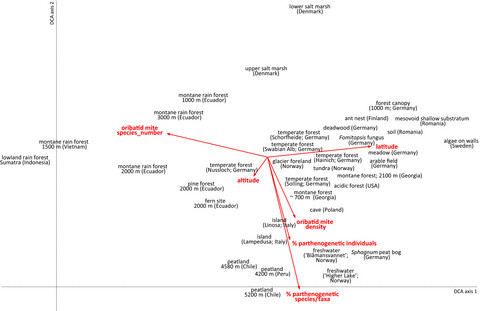
We compiled data on oribatid mite communities from different habitats across biomes. Based on the compiled dataset, we analyzed if the percentage of parthenogenetic species and the percentage of individuals of parthenogenetic species are related to total oribatid mite density, species number, and potentially other driving factors of the reproductive mode including altitude and latitude. Overall, the data showed that low density of oribatid mites due to harsh environmental conditions is associated with high frequency of parthenogenesis supporting predictions of the Structured Resource Theory of Sex rather than the Red Queen hypothesis.
Comparative phylogeography of five widespread tree species: Insights into the history of western Amazonia
- Pages: 7333-7345
- First Published: 11 June 2019
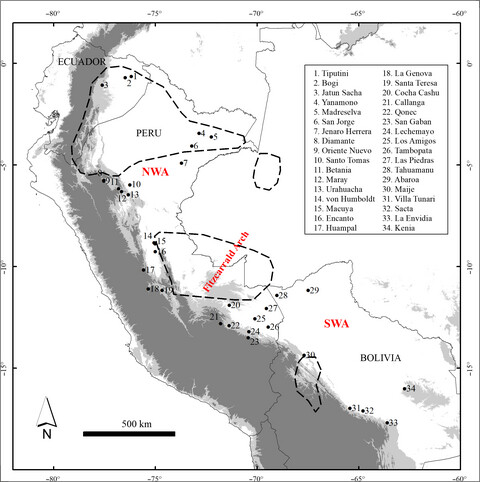
Our study includes thorough and relatively uniform sampling of populations of five widespread western Amazonian tree species across a wide geographic area covering most of western Amazonia. As such, it is the first comparative phylogeographic study of the trees of western Amazonia, which houses the world's most species-rich forests. By using plastid and nuclear markers sampled in 34 locations across Ecuador, Peru, and Bolivia, we studied the geographic patterns of genetic differentiation to test for shared impact of past climatic and geological events. We did not find spatially congruent phylogeographic breaks across species suggesting no common biogeographic history of these Amazonian tree species. The idiosyncratic phylogeographic patterns of species could be due instead to species-specific responses to geological and climatic changes. Population genetic patterns were similar among species with similar biological features, indicating that the ecological characteristics of species impact large-scale phylogeography.
REVIEW ARTICLES
Monitoring program design for data-limited marine biogenic habitats: A structured approach
- Pages: 7346-7359
- First Published: 20 May 2019
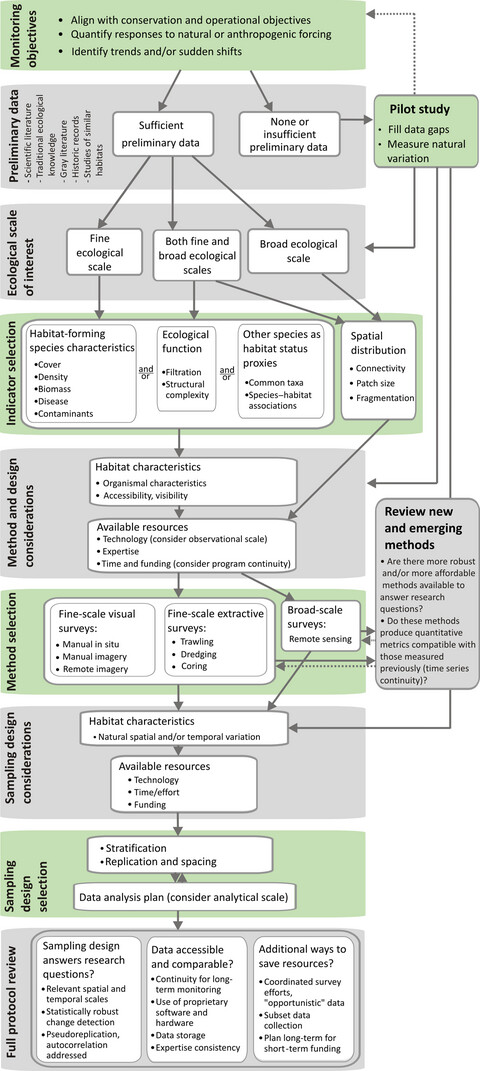
We reviewed approaches to benthic assessments across marine biogenic habitats and identified common themes related to indicator selection, sampling methods, and survey design. We then proposed a systematic, iterative process for establishing a monitoring program for data-limited biogenic habitats and illustrated its application using glass sponge reefs as a case study.
Ecosystem services provided by bromeliad plants: A systematic review
- Pages: 7360-7372
- First Published: 29 May 2019
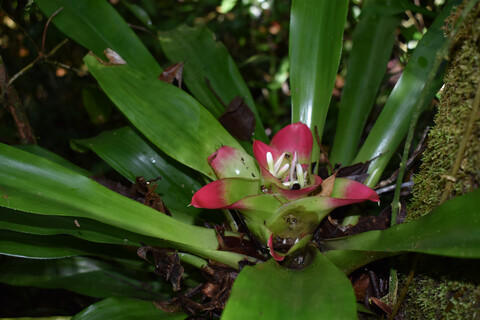
Bromeliads have been widely used as a model system for testing fundamental ecological theory; nevertheless, their benefits to the surrounding ecosystems and human society have been largely overlooked. Using a systematic review, we showed that while the publication of studies about supporting ecosystem services have accelerated over the last 30 years, little attention has been payed to provisioning, regulating, and cultural services provided by bromeliads.




